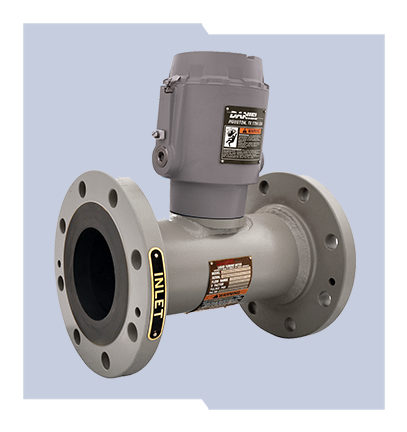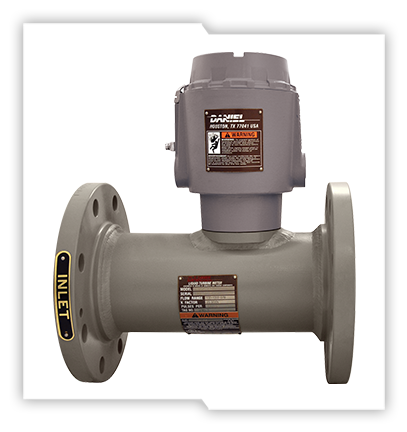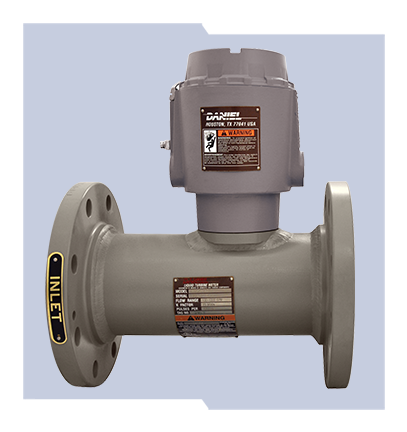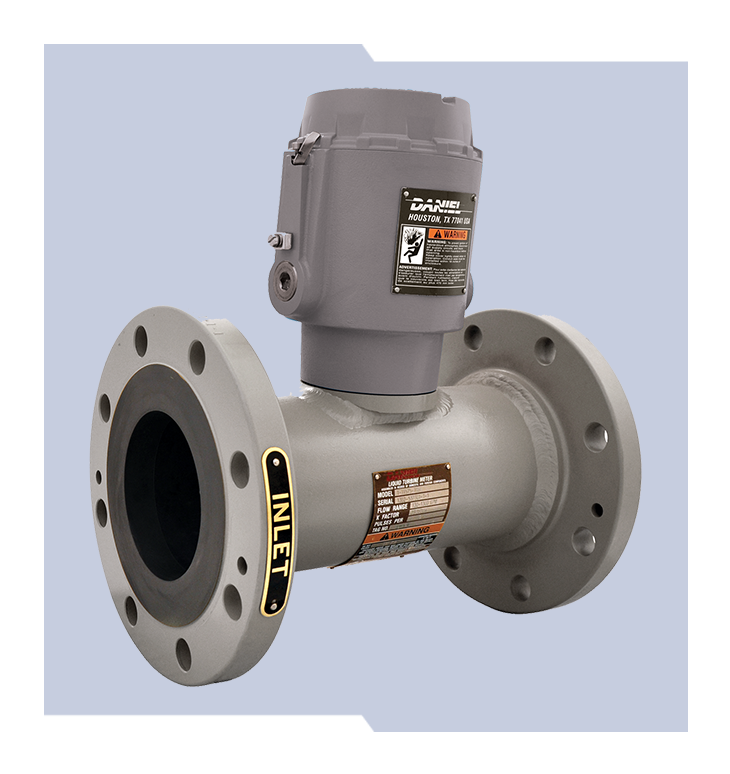
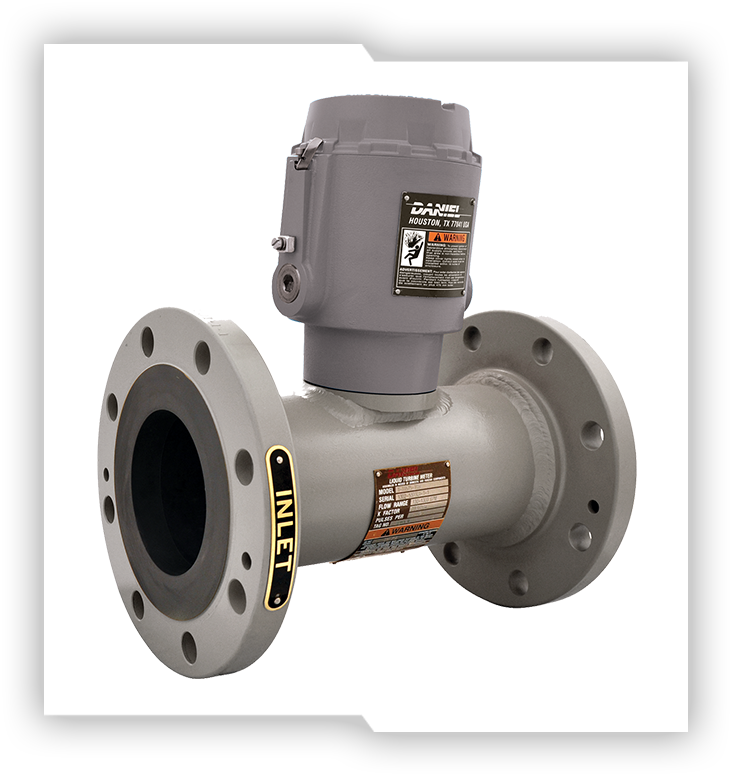
Daniel® Liquid Turbine Meters
Turbine Meter Theory
The basic theory behind Daniel liquid turbine meters is relatively simple. Fluid flow through the meter impinges upon the turbine blades which are free to rotate about an axis along the center line of the turbine housing. The angular (rotational) velocity of the turbine rotor is directly proportional to the fluid velocity through the turbine. These features make the turbine meter an ideal device for measuring flow rate.
The output of the meter is taken by an electrical pickoff(s) mounted on the meter body. The pickoff’s output frequency is proportional to the flow rate. In addition to its excellent rangeability, a major advantage of the turbine meter is that each electrical pulse is also proportional to a small incremental volume of flow. This incremental output is digital in form, and as such, can be totalized with a maximum error of one pulse regardless of the volume measured.
The turbine meter and associated digital electronics form the basis of any liquid metering system. An expanding blade hanger assembly holds the turbine rotor in alignment with the fluid flow. The angle of the turbine blades to the stream governs the angular velocity and the output frequency of the meter. A sharper blade angle provides a higher frequency output. In general, the blade angle is held between 20º and 40º to the flow. Lower angles cause too low of an angular velocity and loss of repeatability, while larger angles cause excessive end thrust.





